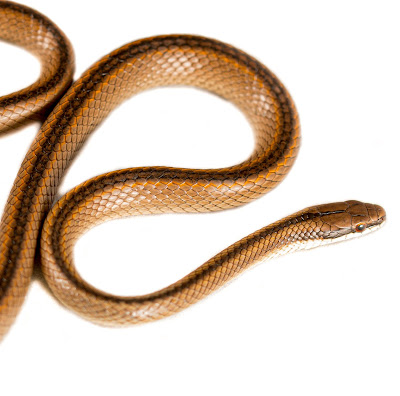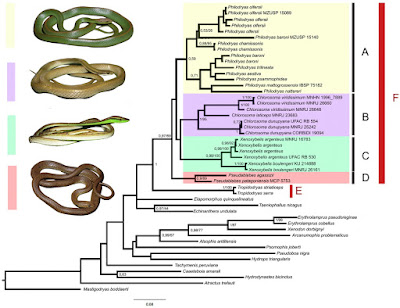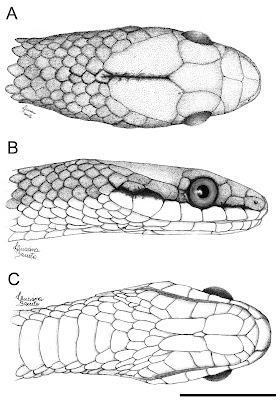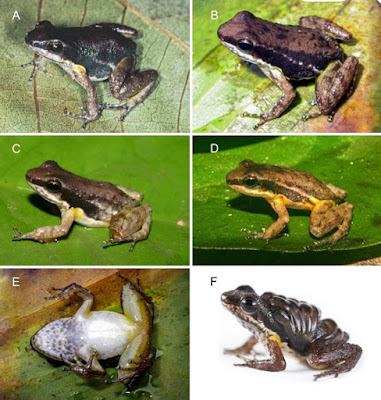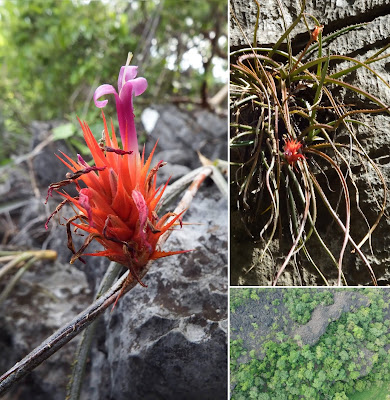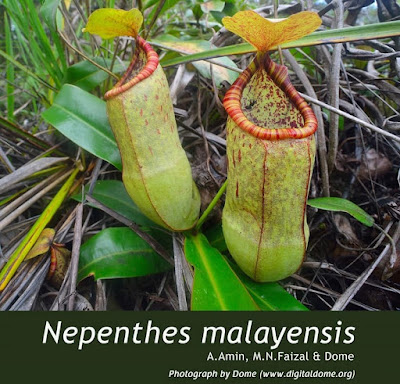[Most Recent Entries] [Calendar View]
Wednesday, December 23rd, 2020
| Time | Event | ||||||||
| 2:05a | [Herpetology • 2021] A Phantom on the Trees: Integrative Taxonomy Supports A Reappraisal of Rear-fanged Snakes Classification (Dipsadidae: Philodryadini)
Abstract The Neotropics harbour a spectacular amount of biodiversity, but many of these species remain to be discovered and placed into the tree of life. In the neotropical snake genus Philodryas, the systematics of these rear-fanged snakes has been controversial and debated in recent years. Here, we combine published datasets with new morphological (scale microdermatoglyphics, osteology, pholidosis and genital features) and molecular (mitochondrial and nuclear) data to reassess the phylogenetic positioning of rear-fanged snakes within the tribe Philodryadini. We identified putative synapomorphies and pronounced morphological variation in hemipenial features. Our results suggested a need to reclassify many species in order to clarify some relationships within the Philodryas radiation. We also redefined Philodryadini by resurrecting three genera and naming a newly discovered species. Keywords: Male genitalia, Microdematoglyphics of dorsal scales, Molecular phylogeny, Osteology, Philodryadinii systematics, Soft anatomy Order Squamata Oppel, 1811 Family Dipsadidae Bonaparte, 1838 Subfamily Xenodontinae Bonaparte, 1838 Genus Pseudablabes Boulenger, 1896 status revalidated Pseudablabes agassizii (Jan, 1863) Pseudablabes patagoniensis (Girard, 1858) comb. nov. We tentatively include Pseudablabes arnaldoi (Amaral, 1932) comb. nov. in this genus based on overall external similarities (e.g., colour pattern, pholidosis and general habitus), but mainly by sharing unique similarities of hemipenial morphology (Fig. 2).
Genus Chlorosoma Wagler, 1830 status revalidated Chlorosoma viridissimum (Linnaeus, 1758) Chlorosoma laticeps (Werner, 1900) comb. nov. Genus Xenoxybelis Machado, 1993 status revalidated Xenoxybelis argenteus (Daudin, 1803) Xenoxybelis boulengeri (Procter, 1923)
Chlorosoma dunupyana sp. nov. Taeniophallus brevirostris: (non Peters 1863) Silva et al., 2012:169. Etymology: From the Panoan speakers Katukina/Kashinawa Indigenous words dunu (= snake) + pyanã (= venomous) (see Souza et al. 2002), used herein in reference to well-developed Duvernoy’s gland and rear-fang in the posterior portion of maxillary of the newly discovered snake. Paulo R. Melo-Sampaio, Paulo Passos, Angele R. Martins, W. Bryan Jennings, Julio C. Moura-Leite, Sérgio A. A. Morato, Pablo J. Venegas, Germán Chávez, Nathocley M. Venâncio and Moisés B. Souza. 2021. A Phantom on the Trees: Integrative Taxonomy Supports A Reappraisal of Rear-fanged Snakes Classification (Dipsadidae: Philodryadini). Zoologischer Anzeiger. 290; 19-39. DOI: 10.1016/j.jcz.2020.10.008 | ||||||||
| 2:46a | [Herpetology • 2020] Leucostethus bilsa • A New Species of Leucostethus (Anura: Dendrobatidae) from the Cordillera Mache-Chindul in northwestern Ecuador, with comments on similar Colostethus and Hyloxalus Abstract We describe a new species of dendrobatid frog, Leucostethus bilsa sp. nov., using molecular, morphological, and acoustic evidence. We also comment on the taxonomic status of four similar Hyloxalus and Colostethus. We provide an updated phylogeny of Leucostethus that corroborates previous hypotheses of relationships of nine species. Phylogenetic analysis using mitochondrial (i.e., 7095 bp of combined data from NADH1, NAHD2, cytochrome c oxidase I, cytochrome b and 12S-16S rRNA) and seven nuclear genes (i.e., 4739 bp) indicate a close relationship of L. bilsa to an undescribed species from Gorgona Island, Colombia, both of which apparently diverged in the Pliocene about 3 million years ago with about 6.25% (i.e., 146/2335 bp) differences for the section of 12S-16S mitochondrial fragment. Leucostethus bilsa is diurnal and riparian, characterized by distinctive bright mustard-yellow flash marks in the axillar and groin regions, posterior belly, and in the hindlimbs, the presence of dark gray lower labial stripe or marks, sexual dimorphism in ventral pattern, and by having male uniparental care. We describe its osteology and the male advertisement call, which is a series of peep notes. Osteological microCT images of representatives of each of the Colostethinae genera reveal a number of intriguing characters that may prove to be useful in phylogenetic studies. In terms of its distribution, Leucostethus bilsa is currently known only from a very small area within the Reserva Biológica Bilsa, located within the Cordillera Mache-Chindul in the Chocoan region of northwestern Ecuador, which was a Pliocene-Pleistocene refugium. This region is highly threatened with habitat degradation and remains as the last surviving refuge for a forest community known for a high proportion of endemic species of both flora and fauna. Keywords: Anura, Chocoan, morphology, phylogeny, systematics, vocalization Leucostethus bilsa sp. nov. Gregory O. Vigle, Luis A. Coloma, Juan Carlos Santos, Sebastian Hernandez-Nieto, H. Mauricio Ortega-Andrade, Daniel J. Paluh and Morley Read. 2020. A New Species of Leucostethus (Anura: Dendrobatidae) from the Cordillera Mache-Chindul in northwestern Ecuador, with comments on similar Colostethus and Hyloxalus. Zootaxa. 4896(3); 342–372. DOI: 10.11646/zootaxa.4896.3.2 | ||||||||
| 11:03a | [Botany • 2020] Acanthostachys calcicola (Bromeliaceae, Bromelioideae) • A New Species from A Limestone Outcrop in Tocantins State, Brazil
Abstract A new species of bromeliad, Acanthostachys calcicola, a third taxon for the genus, is here described. A. calcicola was discovered during field work in the limestone outcrops of south-eastern Tocantins, central Brazil. It is most similar to A. strobilacea, but differs from it in petal colour and length, and exserted stamens and pistil. A conservation assessment classifies A. calcicola as endangered (EN) with extinction. Keywords: Bromeliad, Cerrado, Karst, Neotropical Region, Northern Brazil, Poales, saxicolous, Bambuí, conservation assessment, Monocots Gabriel Mendes Marcusso, Alexandre K. Monro, Pablo Hendrigo Alves de Melo and Julio Antonio Lombardi. 2020. Acanthostachys calcicola (Bromeliaceae, Bromelioideae), A New Species from A Limestone Outcrop in Tocantins State, Brazil. Zootaxa. 472(2); 201–206. DOI: 10.11646/phytotaxa.472.2.10 Top 10 species new to science in 2020 Despite 2020's challenges, botanical and mycological science has continued with a bumper list of incredible newly named species being documented with the help of our collaborators across the world. | ||||||||
| 11:22a | [Botany • 2020] Nepenthes malayensis (Nepenthaceae) • A New Species of Carnivorous Pitcher Plant from Peninsular Malaysia
Summary Nepenthes malayensis A.Amin, M.N.Faizal & Dome is described as a new species discovered from a montane forest in the eastern part of Peninsular Malaysia. The species is considered highly threatened since only a few individuals have been discovered within a limited area and almost all of them grow on humus-covered boulders scattered in the summit region. Due to a slight resemblance to N. sanguinea Lindl., it was initially thought to be of an allied form; however, anatomy, morphological and molecular analyses have established N. malayensis as a distinct taxon. A diagnosis, description, figures and preliminary conservation status of the species are provided in this article. Key Words: Insectivore, monkey cup, new taxon, phylogenetics, taxonomy, Terengganu Nepenthes malayensis A.Amin, M.N.Faizal & Dome sp. nov. RECOGNITION. This species differs from Nepenthes sanguinea in having broadly angular, pubescent climbing stems (vs sharply three-angled and glabrous); pitchers contracted below peristome (vs cylindrical and widening towards mouth); cylindrical peristome (vs flattened or expanded); lower part of pitcher broadly ovoid (vs infundibular, narrowly ovoid). Overall, gross pitcher appearance of the new species is more robust and leathery compared to N. sanguinea, and contracted above hip — akin to the shape of an ‘hourglass’. Mature plants of N. malayensis sp. nov. tend to produce larger upper pitchers that can hold up to 500 – 700 mL of liquid to the brim (vs 200 – 400 mL). Both upper and lower pitchers of the new species have moderately to shortly acuminate rear mouth part (vs highly acuminate, often elongated into a neck) and are green throughout (Figs 1, 2 & 7). The new species is considered a facultative lithophyte as no individual has been observed to be terrestrial so far (N. sanguinea primarily terrestrial, occasionally epiphytic). DISTRIBUTION AND ECOLOGY. Only known from Peninsular Malaysia: Terengganu, East Coast Range (Banjaran Pantai Timur). ETYMOLOGY. The specific epithet malayensis is derived from the word Malaya — the classical name for Peninsular Malaysia — signifying that the species was discovered in Peninsular Malaysia and currently acknowledged to be endemic to the eastern part of this region. Amin Asyraf Tamizi, Mohd Norfaizal Ghazalli, Dome Nikong, Edward Entalai Besi, Muhamad Ikhwanuddin Mat-Esa, Anuar Rasyidi Mohd-Nordin, A. Latiff and Mohamad Alias Shakri. 2020. Nepenthes malayensis (Nepenthaceae), A New Species of Carnivorous Pitcher Plant from Peninsular Malaysia. Kew Bulletin. 75, 63. DOI: 10.1007/s12225-020-09918-z |
| << Previous Day |
2020/12/23 [Calendar] |
Next Day >> |
